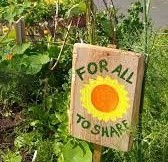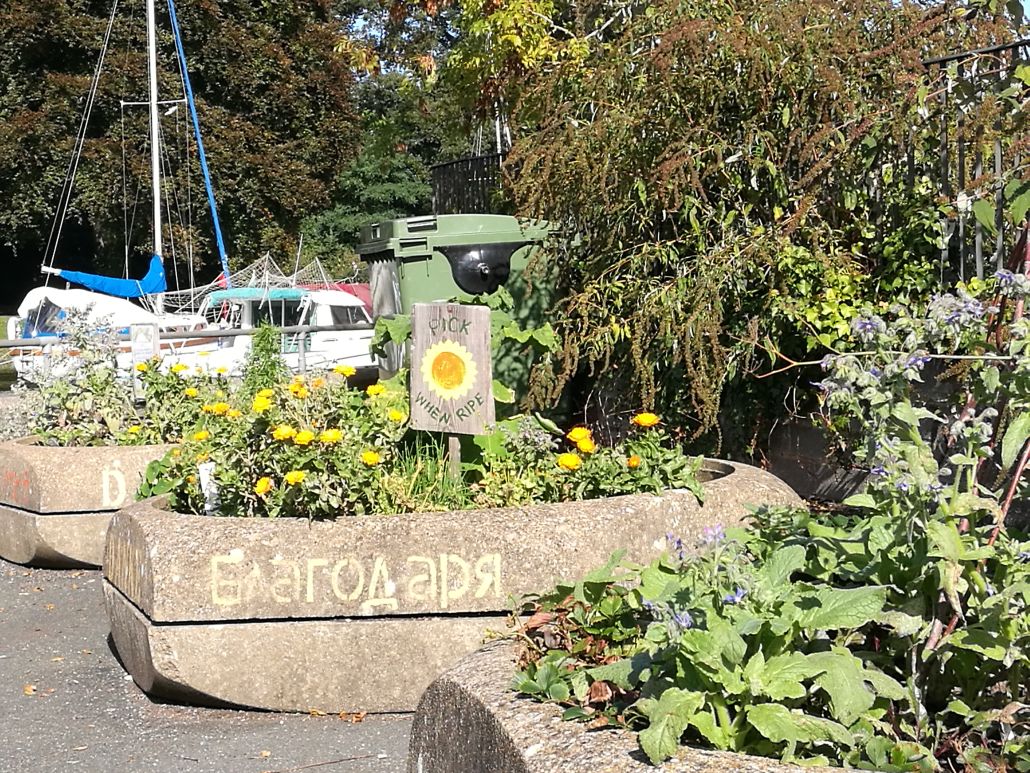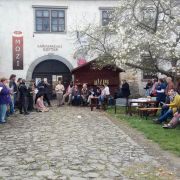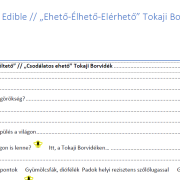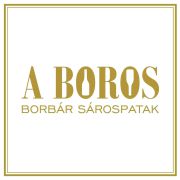Incredible Edible Tokaj Wine Region – the beginnings
A vision of fruits, nuts and vegetables growing all around the Tokaj Wine Region for all to share. The seed was planted! What an easy way to bring people closer to healthy, seasonal, free local food as well as to each other, nature and the local area. And people’s responses to the idea show we are hungry for more plants giving food. When the head of the Cultural House first heard about the project he immediately offered the Gallery bed as a herb garden – and the first planting in the Incredible Edible Tokaj Wine Region project.
When asked if we could plant some fruit and nut trees around a new school area, the Mayor said, ‘I’ll plant the whole village!” That probably won’t happen, not the whole village anyway, but his enthusiasm and openness are typical, as well as very welcome. People are offering plants, tools, expertise, financial support and time.
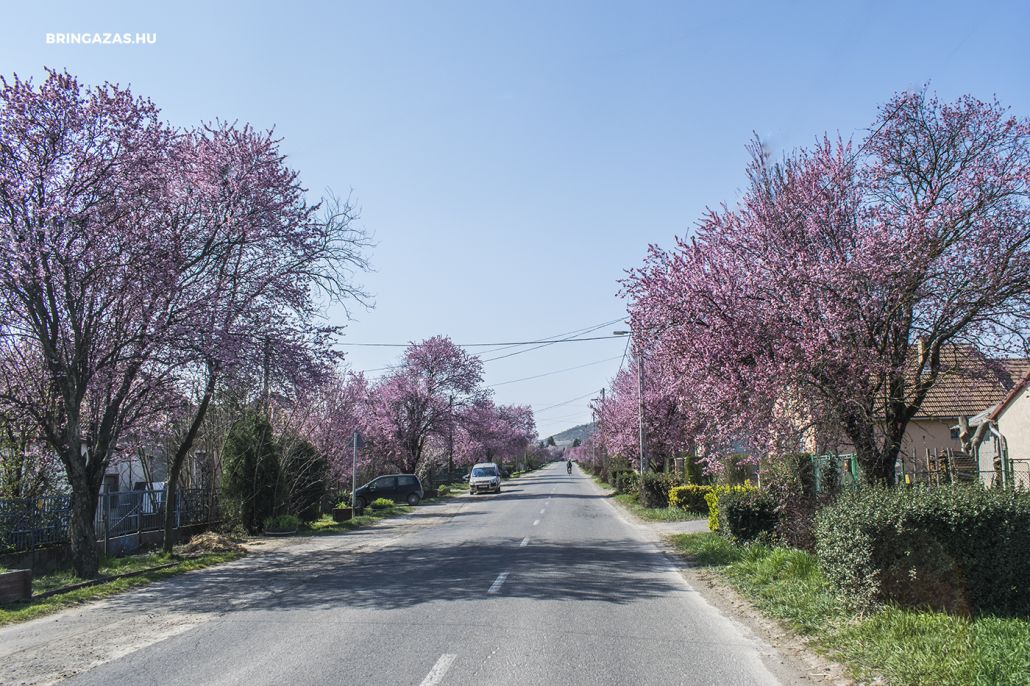 Trees in blossom – Photo © Tokár Rita | Bringazas.hu
Trees in blossom – Photo © Tokár Rita | Bringazas.hu
So, it seems the time is ripe to set nuts, fruit and vegetables centre stage in our environments once again. Choosing resistant varieties means no need for pesticides which also protects our declining insect, bird and mammal populations (a staggering 70 % of insects have died since the 1970s, David Attenborough).
We’re dreaming and creating community and school gardens and orchards, herb gardens at museums and health centres, tomatoes and courgettes in bus stop flowerbeds – together with their usual ornamental residents! “Cherry to Medlar” orchards around schools, sports/football fields… Pergolas with local resistant grape varieties for a cool grape experience. More almond trees in the vineyards once again. A symbol of bravery and courage, purity, hope, and love, almonds are valuable and nutrition nuts; the stunning early flowering (Feb-Mar here) offers possibilities for blossom celebrations throughout the wine region. Almond blossom picnic anyone?
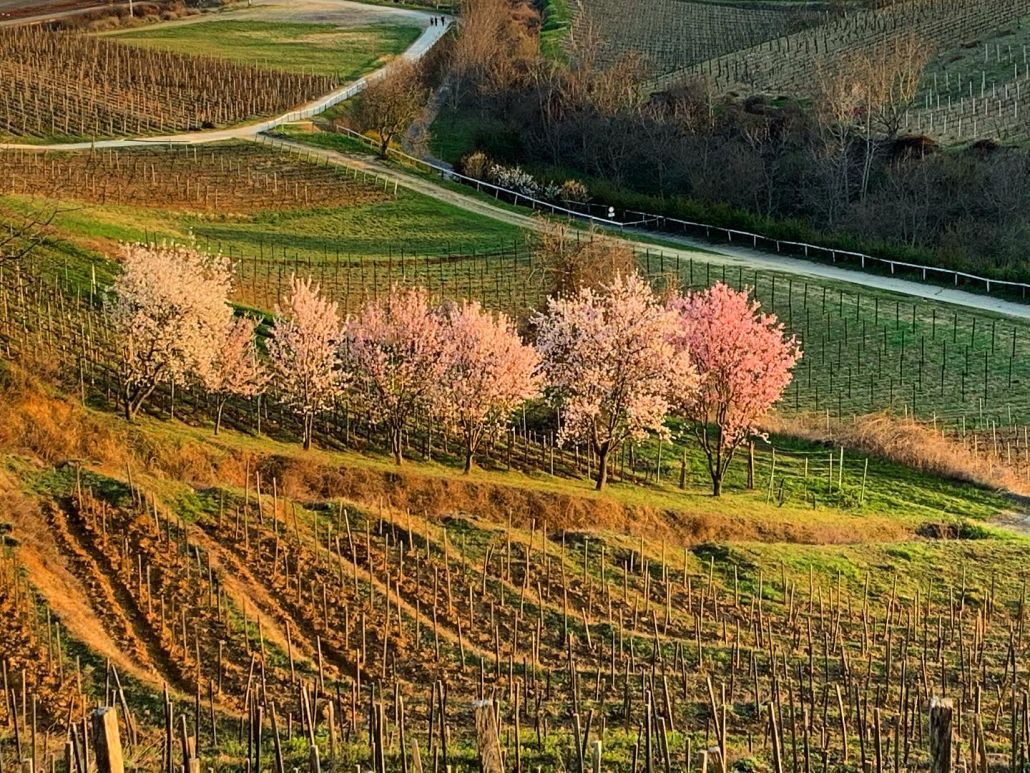 Almond trees in blosson (by István Balassa https://www.facebook.com/balassabor/photos/a.2015066518513904/4084981701522365/?type=3)
Almond trees in blosson (by István Balassa https://www.facebook.com/balassabor/photos/a.2015066518513904/4084981701522365/?type=3)
Villages linked again under the abundant shade of apples, sour cherries and plums, walnuts, hazelnuts and chestnuts. Food avenues that are also wildlife corridors, leaving native rose, sloe and hawthorn for our friends in the natural world. Bee meadows and insect and bird paradises as habitat and food to support declining insect populations. Mushroom logs fruiting edible and medicinal fungus in shady corners. Our imagination is the limit!
Comenius, considered “Father of Modern Education”, said, “[For every school] there should be a garden attached where they [students] may feast their eyes on trees, flowers, and plants … where they always hope to hear and see something new. Since the senses are the most trusty servants of the memory, this method [gardens] of sensuous perception will lead to the permanent retention of knowledge.”
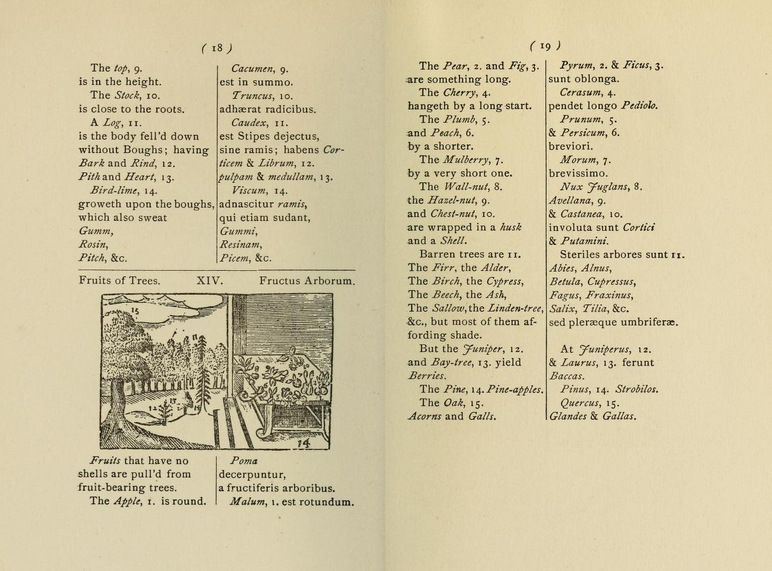 Tree and fruit entries in Orbis Pictus by Comenius the first children’s picture book
Tree and fruit entries in Orbis Pictus by Comenius the first children’s picture book
The project addresses a plethora of current social, economic and environmental issues. Increased access to fresh, local, seasonal, healthy food for local residents builds community and contributes solutions to both food poverty and food security, also reducing food miles. Since the original inspiration for the Tokaj Wine Region Incredible Edible project started in Todmorden in the UK in 2007, over 700 groups have joined the Incredible Edible movement worldwide with over 300 in France. New community gardens and orchards, more local produce and products, artisans, businesses and community knowledge hubs have revived markets and stimulated local economies. “Vegetable/Fruit tourism” makes the region more attractive to tourists (and it gives journalists writing about the region a new and current story). Happier, healthier residents.
The picture above is from Totnes, one of the over 700 Incredible Edible towns worldwide
For businesses, planting represents opportunities in terms of marketing, new products and festivals/attractions as well as social responsibility action. In the face of our serious environmental challenges, tree planting and bee meadows are part of a positive sustainable response to climate change and species loss. These habitats support our threatened species and promote bio-diversity. Planting traditional varieties reduces pesticide and fuel use, cutting food miles. Finding the old local resistant varieties to be grafted offers various development opportunities. All these factors strengthen community, economy and environment.
Several aspects of the project are in direct accordance with the World Heritage management plan which states, “The inclusion and promotion of local products (not only the Hungaricum Tokaji Wine) expands the range of family friendly services”. Planting traditional grape and fruit varieties is also encouraged in the plan – naturally.
Where is most natural for you to plant a fruit or nut tree? Some herbs and vegetables? Where can you imagine planting/sharing food?

